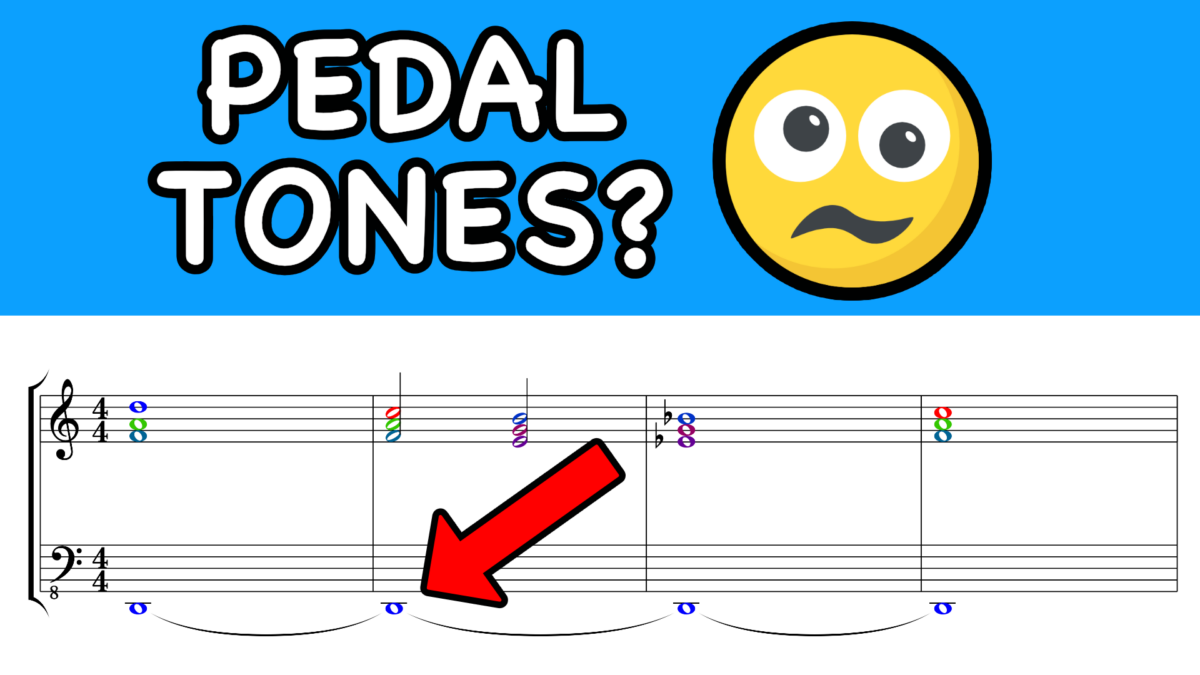 A pedal tone (also called pedal note or pedal point) is long sustained note in the bass, which is held (sustained) regardless of what chords and melodies are played above it, even if the harmonies created are dissonant.
A pedal tone (also called pedal note or pedal point) is long sustained note in the bass, which is held (sustained) regardless of what chords and melodies are played above it, even if the harmonies created are dissonant.
The term comes from the traditional organ, where the bass is literally played by pressing pedals with your feet, and you can keep playing whatever notes and keys you want, while holding down a pedal bass note.
In most cases the pedal tone is either the tonic (root key of your composition) or the perfect 5th. Meaning if your music is written in D minor, the most common pedal tones would be D or A.

How to use Pedal Tones in Music?
The power of a pedal tone comes from the fact that it psychologically becomes a harmonic anchor.
Which means that even if you play chords, melodies above it that technically create a very dissonant overall harmony…we still perceive it as sounding “good”.
Let’s say you have a pedal tone as a D, and the track is in D minor. If you simply keep the low D pedal tone playing, you can pretty much play any chord progression on top of this pedal tone, even if all notes together create a very dissonant harmony.
If you play the exact same chord progression without having the low D as a sustained pedal tone, but instead make it a part of each chord, you will instantly hear how dissonant and chaotic the harmony will sound.
This is the power of the pedal tone, it can create a deep and powerful and rich harmonic dimension without making the overall chords and harmonies created from all notes sound too dissonant.
Inverted Pedal Tone
Even though the traditional term “pedal tone” refers to a long sustained bass tone, you can in fact use the same technique in the high range. Meaning a long sustained note in a high octave of music. This is called an “inverted pedal tone”.
It’s especially common for strings, where for example harmonics can be sustained for several bars of music, creating a pedal tone in the high range.
